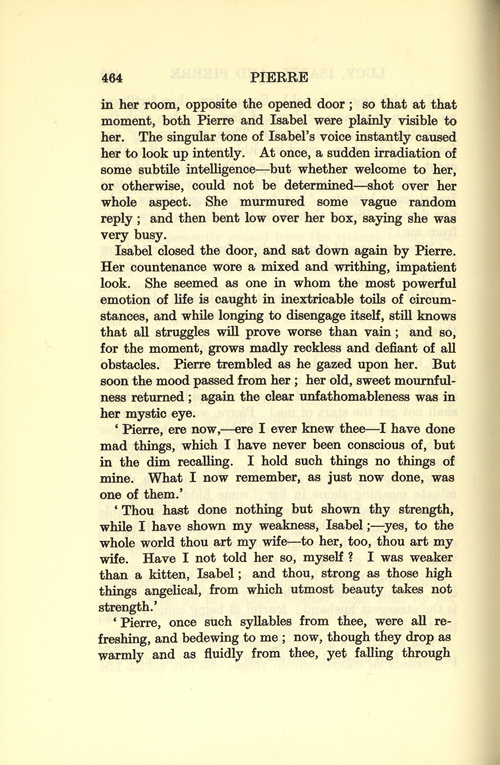a grey tone, or brown
“To begin with, she had always seen herself in her own interior mirror,
as a child woman, too small. And then this little bag of poison she
carried within, the poison of melancholdy and dissatisfaction she
always felt must be apparent in her coloring, must produce a grey tone,
or brown (the colors she wore in preference to others, the sackcloth
robes of punishement.)”
—Anais Nin, Winter of Artifice, 1948.
brown as the color of philosophy
“When she entered his house which was all in brown, brown wood on the
walls, brown rugs, brown furniture, she though of Spengler writing
about brown as the color of philosophy.”
—Anais Nin, Winter of Artifice, 1948.
Renate’s eyes
“Renate’s eyes were sea green and tumultuous like a reduction of the
sea itself. When they seemed about to overflow with emotion, her
laughter would flutter like windchimes and form a crystal bowl to
contain the turquoise waters as if in an aquarium, and then her eyes
became scenes of Venice, canals of reflections, and gold specks swam in
them like gondolas.”
—Anais Nin, Collages, 1964.
the state of painting today
“‘There was a painter who was asked to send his best painting to an
exhibition and he accepted on condition that it would be curtained off
until the day of the opening. This condition was accepted. The crowd
came, quite a large one. His painting was the only one hidden behind a
curtain in a box, and the last to be exposed. When the curtain was
finally parted, the painting was a large square canvas, pure blank.
Blank! The public was outraged. There were insults: “Surrealist!
Dadaist! Beatnik! Mutant!” Then the painter came forward and explained
that he had painted a self-portait and that his dog had found it such
an exact likeness that he had licked it all off. But there had been a
portrait, and this was merely the proof of the faithfulness of the
likeness. And so . . . for those who are interested in progress, twenty
years ago painting was judged by critics, and today it is judged by a
dog. This is the state of painting today.’”
—Anais Nin, Collages, 1964. (This is for you, Lindsay!)
A River Runs Through It: Pierre: or, The Ambiguities

the town’s sun
“[T]he country weareth her sun by day as a diamond on a Queen’s brow;
and the stars by night as necklaces of gold beads; whereas the town’s
sun is smoky paste, and no diamond, and the town’s stars are pinchbeck
and not gold.”
—Herman Melville, Pierre: or, The Ambiguities, 1852.
the green and golden world
“There are some strange summer mornings in the county, when he who is
but a sojourner from the city shall early walk forth into the fields,
and be wonder-smitten with the trance-like aspect of the green and
golden world. Not a flower stirs; the trees forget to wave; the grass
itself seems to have ceased to grow; and all Nature, as if suddenly
become conscious of her own profound mystery, and feeling no refuge
from it but silence, sinks into this wonderful and indescribable
repose.”
—Herman Melville, Pierre: or, The Ambiguities, 1852.
the idea of green as a color
“[N]othing can more vividly suggest luxuriance of life, than the idea
of green as a color; for green is the peculiar signet of all-fertile
Nature herself.”
—Herman Melville, Pierre: or, The Ambiguities, 1852.
Light blue be they perpetual colour
“Wondrous fair of face, blue-eyed, and golden-haired, the bright
blonde, Lucy, was arrayed in colours harmonious with the heavens. Light
blue be they perpetual colour, Lucy; light blue becomes thee best. . .
.”
—Herman Melville, Pierre: or, The Ambiguities, 1852.
fluid lapis lazuli
“All the waves in Lucy’s eyes seemed waves of infinite glee to him. And
as if, like veritable seas, they did indeed catch the reflected
irradiations of that pellucid azure morning; in Lucy’s eyes, there
seemed to shine all the blue glory of the general day, and all the
sweet inscrutableness of the sky. And certainly, the blue eye of woman,
like the sea, is not unifluenced by the atmosphere. Only in the open
air of some divinest, summer day, will you see its ultramarine,—its
fluid lapis lazuli.”
—Herman Melville, Pierre: or, The Ambiguities, 1852.